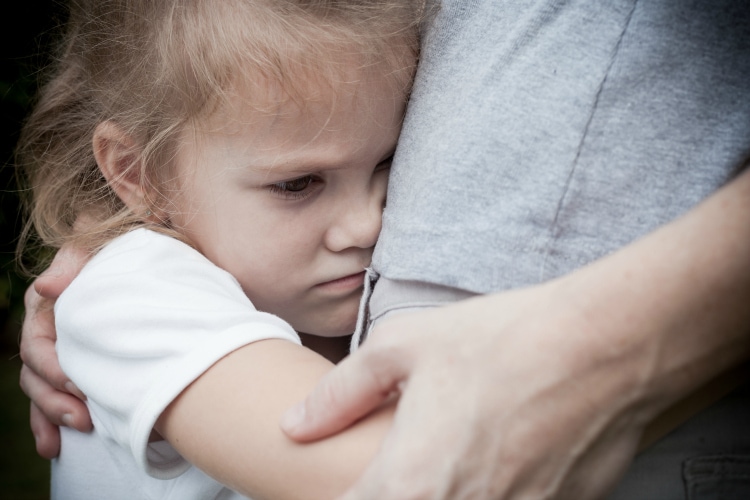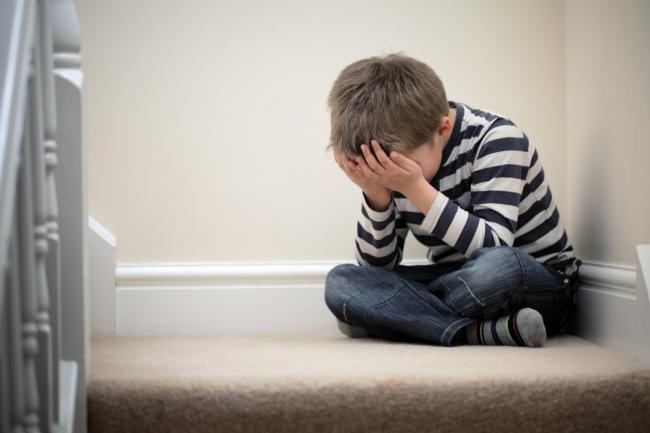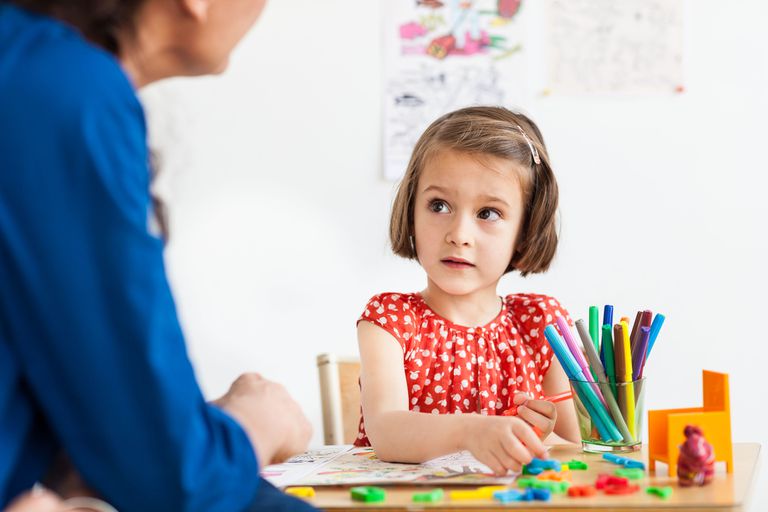
Childhood itself is quite an anxious process. Kids are tasked with learning new skills, meeting new challenges, overcoming fears, and navigating a world that doesn’t always make sense. But sometimes these fears or stressors prove too much to handle, and the normal comforts that adults can provide don’t quite seem to be enough. In these cases, a child may have a diagnosable anxiety disorder.
Anxiety disorders are the most commonly experienced mental illnesses in the United States, and kids are no exception. Roughly one in eight children may have an anxiety disorder, but a majority of children who would qualify for a diagnosis are not getting the treatment they need.
Young people are also being exposed to the online world earlier, with social networking sites having the potential to become a negative environment for young, impressionable minds. Social media has also been linked to cyber-bullying, low self-esteem and poor body image, all of which can increase feelings of anxiety.
Children and young people can find it difficult to express their concerns and may bottle up emotions. If these feelings are not addressed they can affect mental health, leading to anxiety disorders and sudden panic attacks. Not treating anxiety leaves a child at risk of decreasing performance in school, poor social skills, and harmful behaviors like substance abuse.
Understanding the Warning Signs
Anxiety affects everyone differently. However, there are some common symptoms to look out for in your child:
- They are struggling to concentrate.
- They are having difficulties sleeping.
- Their eating habits have changed.
- They quickly become angry or irritable.
- They appear tense, fidgety or need to use the toilet often.
- They cry more than usual for no apparent reason.
- They are clingy and reluctant to leave you.
- They complain of feeling unwell or having tummy aches.
Of course, whenever you spot a change in your child’s behavior or health it’s recommended that you make an appointment with a therapist as soon as possible.
How to Help a Child Having a Panic Attack
Panic attacks are an incredibly frightening symptom of anxiety. They can last anywhere between five and 20 minutes, and have very real physical effects such as chest pain, shortness of breath, dizziness, nausea, or trembling.
Children may not be as capable of articulating their feelings as adults, so it can be hard to know if they need help. Below are some tips about how you can help your child if you suspect they are having a panic attack:
- Remain in control. Remember, a child in the midst of a panic attack has lost their sense of control, which in itself is frightening and overwhelming.
- Stay calm and mindful while using a firm but gentle tone of voice to communicate that you are present and there for them and that you understand how anxious they feel.
- Use age-appropriate words to describe anxiousness, such as “nervous” or “scared.” By doing this you will communicate a sense of safety, confidence, and containment for the child who is in the middle of an emotional storm.
- Ensure the child feels increasingly safe. Use soothing words. Use their name. Say things like, “I know you don’t feel okay but you will be okay,” “I will help you get through this and it will end soon,” and “Take some deep breaths.”
- Remind them that panic attacks always end and that they will get through them. This can offer hope. However, try not to give excessive reassurance. You want your child to find their own coping strategies.
- Pay attention to the physical symptoms of panic attacks. Convey to the child that the fast heartbeat, dizziness or shaking will pass in a few minutes. Tell them these are signs of their fear, not of illness.
- Give them time to calm down. Don’t rush the child. They will need time to help them regain their sense of self and composure.
Finally, always remember that if you can remain calm during their emotional storm they will regain their resilience and the attack will pass more quickly.
If you are struggling with your mental health due to your child’s panic attacks and need to talk, or if you are worried about your child, always seek out professional support sooner rather than later.
 Types of Childhood Anxiety Disorders
Types of Childhood Anxiety Disorders
There are many types of anxiety disorders, but here are the disorders most common anxiety disorders experienced by children.
Generalized Anxiety Disorder
If your child experiences excessive anxiety or worry that results in fatigue, irritability, muscle tension, difficulty concentrating, or sleep disturbances, then they may receive a diagnosis of generalized anxiety disorder. This worry may be about school performance, friendships, family relationships, or other activities or concerns.
Separation Anxiety Disorder
Some separation anxiety is developmentally appropriate, especially for children between 1-3 years old. But for older children, if they have excessive fear or anxiety about being separated from caregivers, then they may qualify for a diagnosis of separation anxiety disorder.
Children with the disorder may frequently worry about parents dying or becoming separated from them. They may refuse to go out or go to school, have nightmares about separation, or experience physical symptoms like headaches or nausea due to this anxiety.
Selective Mutism
Children with selective mutism may refuse to speak in certain social situations, even though they are very talkative at home or wherever they feel comfortable. They may refuse to speak at school and withdraw from others or avoid eye contact. Children around the age of 5 are most commonly diagnosed with this disorder.
Specific Phobia
Some children may exhibit fear or anxiety about a specific object or situation. If this fear lasts a long time and is out of proportion to the actual danger posed, this fear may be classified as a phobia. Children will cry, freeze up, or cling to an adult when their fear is present. Children can have phobias that include but are not limited to insects, animals, storms, needles, loud sounds, and enclosed spaces.
Panic Disorder
Children who experience recurring panic attacks and worry about having more may have panic disorder. A child having a panic attack may complain of symptoms that can include shortness of breath, chest pain, sensation of choking, nausea, dizziness, chill or heat sensations, fear of “going crazy,” and fear of dying.
Social Anxiety Disorder
If your child has an intense fear of having to participate in class or interaction with their peers, then they may have social anxiety disorder. Children may exhibit this fear through throwing tantrums, crying, clinging to adults, freezing up, or refusing to speak. They may also attempt to avoid social situations that provoke this fear.
Kids ad Parents Learning to Cope with Anxiety
Never hesitate to consult with licensed professionals about your child’s anxiety, as they can guide you towards the right resources and conduct a proper assessment. Children with anxiety disorders are typically treated with talk therapy, medication, or a combination of the two.
Cognitive-behavioral therapy can help a child test out what thoughts they have are realistic or unrealistic. Play therapy may work best for young children to work through anxieties.
Parents often can feel helpless when they see their child experiencing intense fear or worry. There may be a temptation to simply remove the child from all situations that prompt this anxiety or to over accommodate for their child’s fear.
These actions only make a child more sensitive to these environments. Parents can validate the child’s feelings but also model calmness and confidence that their child is going to be okay and can master scary situations like school or meeting new people. Also, because children are most anxious leading up to a challenging situation, it’s important for parents not to ask too many questions about the anxiety.
Remember, as a parent, it’s not your goal to eliminate all anxiety from your child’s life. Your job is to help your child learn to manage anxiety effectively so that they can deal with life’s challenges long into adulthood.
Anxiety is inevitable in life, but no child should have to feel stuck with it. What steps can you take today to help your child learn to manage anxiety successfully?
We are always here to help families residing in McKinney, Plano, Dallas, Denton, Allen, Garland, and the surrounding communities throughout Texas. If your child is experiencing panic attacks or anxiety, please contact our therapist team today at Foundations Counseling.

 Types of Childhood Anxiety Disorders
Types of Childhood Anxiety Disorders
